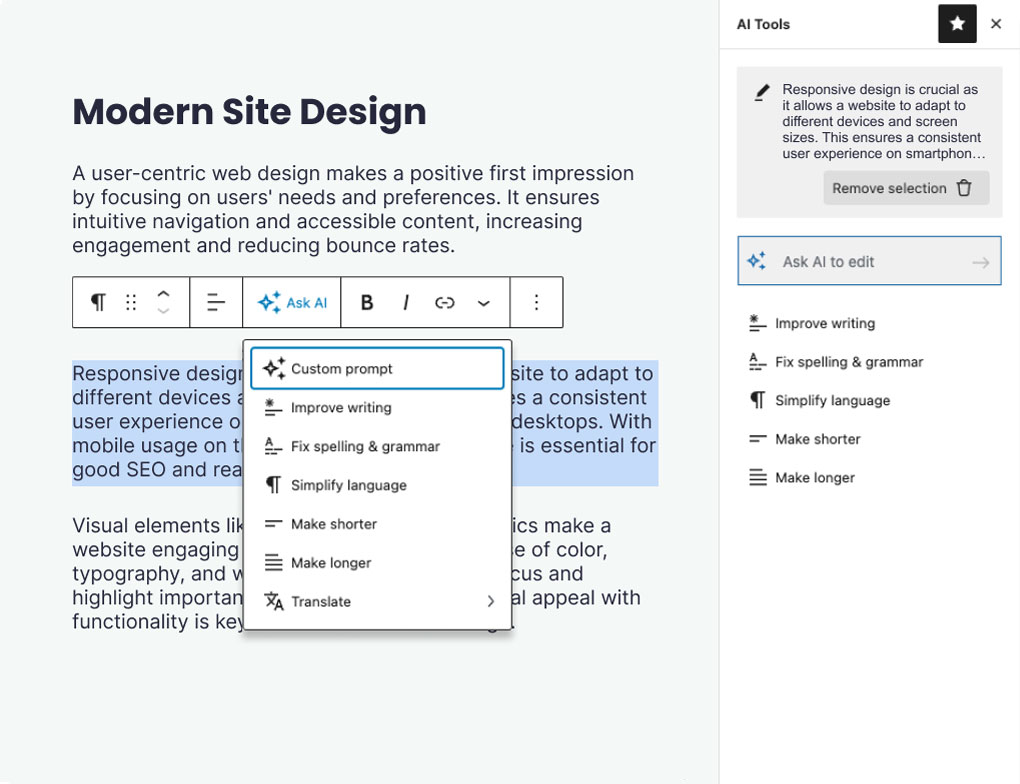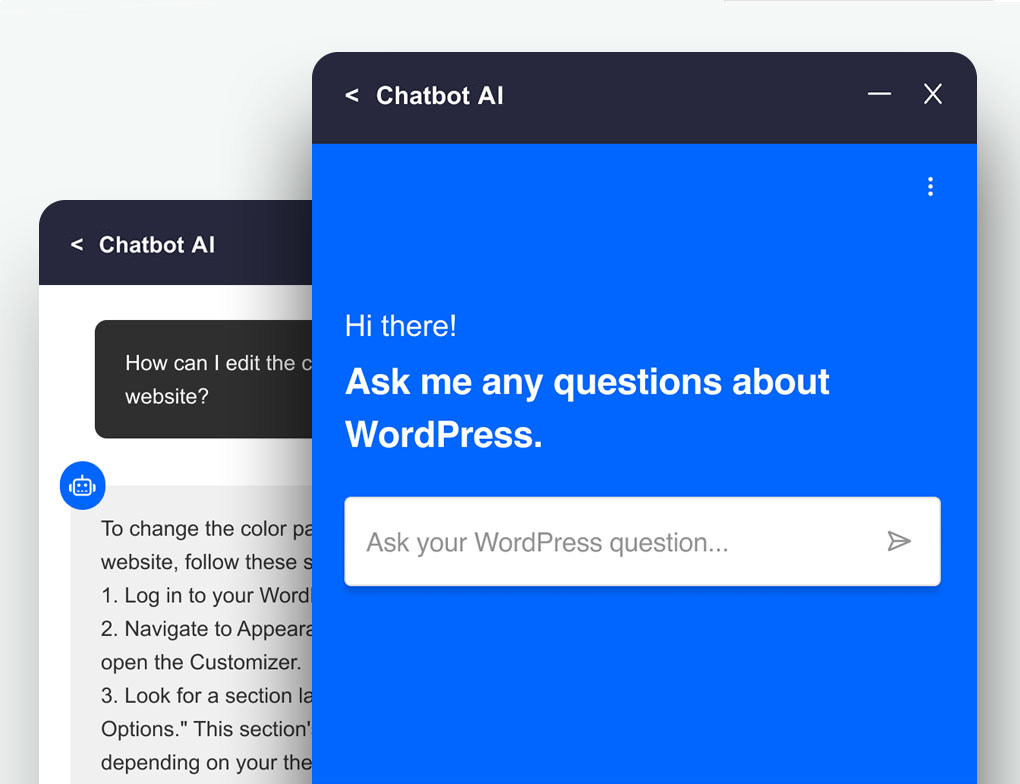Web design is an ever-evolving art, driven by tech innovations, shifting user demands, and bold creative ideas. For businesses and brands, staying ahead of the curve in 2025 is crucial to keeping websites fresh and impactful.
The hottest web design trends are all about elevating user experiences, boosting site speed, and crafting visually stunning, interactive, and personalized digital spaces. Looking to bring these trends to life for your website? WHC’s Pro Services can help you stay ahead with expert web design solutions tailored to your needs.
Now let’s dive into the trends that will shape web design in 2025!
- 1. Minimalist Design With Bold Typography
- 2. Dark Mode and High Contrast Designs
- 3. Custom Illustrations
- 4. Micro-Interactions and Scroll Animations
- 5. 3D Elements and Immersive Web Experiences
- 6. AI-Driven Personalization
- 7. Sustainable Web Design
- 8. Voice Search Optimization and Accessibility
- 9. Augmented Reality (AR) Integration
- 10. Asymmetrical Layouts and Breaking the Grid
- Staying on Trend With Purpose
1. Minimalist Design With Bold Typography

“Less is more” is often at the heart of modern design. A simple, minimalist approach with clean lines and ample blank space continues to dominate, and is often paired with bold, eye-catching typography that adds personality without overcrowding the page. Large, expressive fonts help communicate brand identity and grab attention, even on simple layouts.
2. Dark Mode and High Contrast Designs

Dark mode has become a staple in web design, not only because of its sleek appearance but also for its user-friendly benefits. Dark backgrounds with high-contrast elements reduce eye strain, save battery life, and add a touch of sophistication. This trend is particularly popular in creative industries and tech sites, where a bold, edgy look aligns with brand identity.
3. Custom Illustrations

Illustrations can transform websites into vibrant, dynamic canvases, offering a creative way of conveying brand messages and stories. With custom illustrations, you can enhance the visual appeal and personality of your brand and website.
Quirky characters, rich landscapes, or abstract artwork all add a unique flair that static images or simple text can't achieve.
4. Micro-Interactions and Scroll Animations
Micro-interactions are small, subtle animations that make web content more engaging through movement and interaction. They provide clear, intuitive guidance and feedback without taking up much space. Examples include hovering effects, loading icons, and animated transitions.
Scroll-triggered animations are visually engaging, providing an interactive experience that responds to user behavior. As users scroll, elements animate, move, or change colour, adding depth to the content and making the browsing experience more enjoyable. These animations are popular on storytelling sites, portfolios, and product showcases.
5. 3D Elements and Immersive Web Experiences

Thanks to advances in web technology, integrating 3D elements into web design is becoming more accessible. From interactive product displays to virtual environments, 3D design is making websites more engaging and realistic.
3D technology allows users to immerse themselves in content and is a powerful tool for brands looking to captivate and retain their audience.
6. AI-Driven Personalization
Personalization has long been a key aspect of digital marketing, and now, with the power of artificial intelligence, it’s even more effective. AI can analyze user behaviour in real-time, customizing website elements like product recommendations, layout, and even copy to create a personalized experience. This approach tailors content to the user’s needs, making interactions more relevant and satisfying.
7. Sustainable Web Design

Sustainability is now a huge influence on web design, with more businesses seeking to reduce their carbon footprint. This is incredibly important to WHC, as reflected by our partnership with the Green Business Bureau. Sustainable web design focuses on optimizing code, minimizing resource-heavy elements, and reducing energy consumption. Websites built with eco-friendly principles in mind load faster, have fewer graphics, and are often minimalist by nature. This approach not only appeals to environmentally conscious users but also improves site performance.
8. Voice Search Optimization and Accessibility
As voice-activated devices become more popular, voice search optimization is essential for modern websites. Designing websites to be accessible through voice search requires simplifying language, structuring content, and using keywords that mimic natural speech. Accessibility, more broadly, has also become a priority, with features like text-to-speech, keyboard navigation, and high-contrast design making websites usable for everyone.
9. Augmented Reality (AR) Integration

Augmented reality is becoming a game-changer for industries like retail, real estate, and hospitality. AR allows users to interact with products or spaces in a virtual environment, like trying on clothes or placing furniture in their home. With the growth of AR, more websites are incorporating AR tools directly into their design, offering users an interactive, practical experience without needing to visit a physical store.
10. Asymmetrical Layouts and Breaking the Grid

Traditional web design relies on a grid-based layout, but recent trends show designers pushing boundaries with asymmetrical and “broken” grid designs. These layouts give websites a more dynamic, unpredictable feel, helping brands stand out. Asymmetrical designs are popular among creative brands and agencies looking to showcase innovation and originality.
Staying on Trend With Purpose
Modern web design trends are all about delivering fast, immersive, and personalized experiences that keep users clicking. But instead of trying to jump on every trend, it’s important to choose the ones that align with your brand and truly serve your audience. Prioritize what enhances usability, functionality, and style, and you’ll craft a website that’s not just stunning, but unforgettable. Whether you’re a startup or an established brand, embracing the right trends in 2025 can keep you competitive and leave a lasting impression in the ever-evolving digital world.
Looking to kickstart a project or breathe new life into a website you already have? WHC’s team of design experts is here to take care of all you need.



























